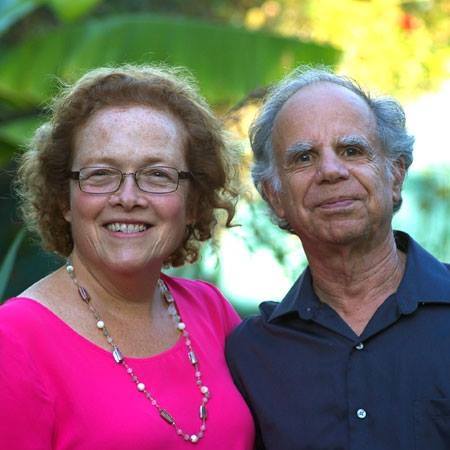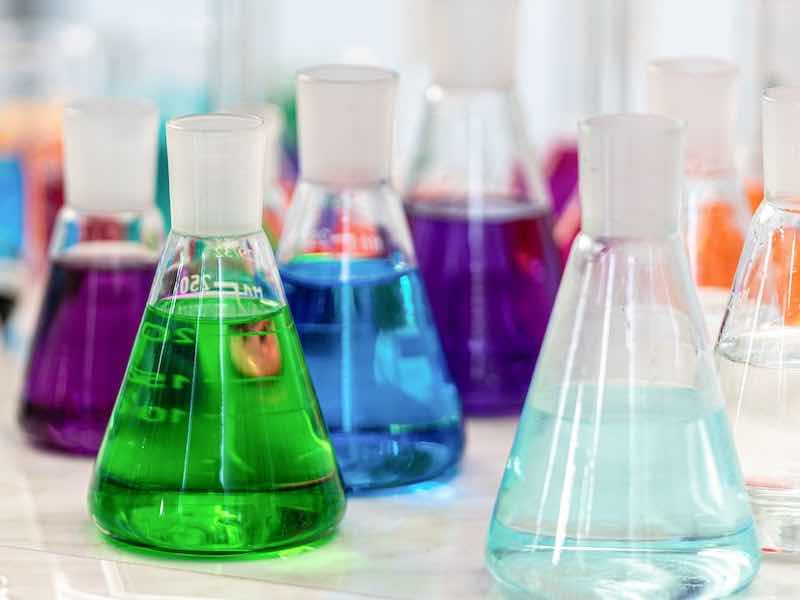It’s an emergency! Regulators decide that the cleaning agent is unsafe for workers, neighborhoods, and/or the environment.
 Barbara and Ed KanegsbergManufacturers are faced with the capital costs, testing, and performance verification associated with finding a substitute chemical and changing an established effective cleaning process. Within a few years, there’s another emergency. Regulators decide that the substitute chemical is also harmful, and yet another cleaning chemical and cleaning process must be found.
Barbara and Ed KanegsbergManufacturers are faced with the capital costs, testing, and performance verification associated with finding a substitute chemical and changing an established effective cleaning process. Within a few years, there’s another emergency. Regulators decide that the substitute chemical is also harmful, and yet another cleaning chemical and cleaning process must be found.
What happens next? The world is saved by banning cleaning agents after cleaning agents. It’s déjà vu all over again. At the same time, requirements for product performance and product cleanliness are increasing. Are the substitute cleaning agents as effective as the original ones? Maybe, maybe not.
Breaking the cycle of emergencies and repeated chemical substitution will require realistic, holistic, and encompassing risk/benefit analyses of the chemical and the process. Root causes of these seemingly inevitable, disruptive emergencies include the traditional chemical-by-chemical approach to regulation. Perhaps we can figure out how to ban Chemophobia.
What is Chemophobia, and Is it Real?
Chemophobia is a prejudice against chemicals or chemistry; it must be real because it has a Wikipedia page(1). Chemicals that are naturally produced tend to be viewed as inherently safe; those made in chemical plants or mixed together in mysterious, unseen laboratories are viewed as inherently suspect. Even evil.
People say they want “natural” products, not products made with chemicals. Michelle Francl indicates that “we are a chemophobic culture. Chemical has become a synonym for something artificial, adulterated, hazardous or toxic”(1).
In the world of critical cleaning, solvents (organic chemicals, those that contain carbon) are often seen as suspect or evil. While aqueous cleaning agents are seen as inherently safe, they contain organic and inorganic chemicals. All cleaning agents and all cleaning processes have to be managed carefully.
Natural Chemicals
I enjoy veggies from the Farmer’s Market or — even better — those that I can pick fresh from my garden. Fresh veggies are made of chemicals. You and I are made of chemicals. As a biochemist, I view all chemicals as having the potential for good and for harm. This includes chemicals that occur naturally, are raised in organic, biodynamic farms, and harvested by thoughtful workers wearing sustainable cotton, and it includes chemicals that are synthesized in a laboratory by scientists in white coats in large reactors.
The di Medici were known for their creative, diabolical use of poisons. These poisons were sometimes derived from their gardens. I noticed a skull and crossbones carved into the entrance to one of their gardens. I don’t think it connoted a Halloween festival. Potentially toxic chemicals are everywhere.
There are beautiful, large castor plants growing wild near me. Ricin, a very potent and deadly toxin, can be derived from the seed of the castor plant.
Traditional Regulatory Approach
One factor in the decrease in effective cleaning agents and other process chemicals is that safety and toxicity are viewed as absolute concepts. There’s an on/off switch; the chemical is “either safe or dangerous, toxic or harmless.” (Djerassi, C, 2004).
What appears to be a traditional regulatory approach results in a continuing cycle of prohibition. A while back, I asked a regulatory professional how chemicals came to appear on “no-no” lists, how they were deemed chemicals of concern, how they were deemed unacceptable, and how they were banned. Their explanation resonated with me, and I found it more than a little disturbing. The individual explained that as a chemical comes into common usage, one or more regulatory agencies investigate it.
The regulatory agency reviews available toxicity studies, most often animal studies, using the results to indicate the exposure limit. Agencies may add safety factors to account for inter-species differences and to assure that people, including sensitive populations, would not be exposed to a harmful level of the chemical. This means that the observed safe exposure limit in animals is typically divided by a high number. The upshot is that what safety professionals and regulatory agencies determine to be acceptable exposure levels for “safe” worker exposure often becomes lower and lower as regulatory scrutiny increases.
As a result of these evaluations, the chemical may be prohibited or banned. I asked the regulator what would happen next. The response was that agencies allow manufacturers to simply choose an alternative chemical or cleaning agent. I asked if anyone looked at the safety or environmental impact of alternative chemicals that would be likely to be chosen. The response, which makes me uneasy, was that regulators allow manufacturers to select an alternative chemical.
The regulatory professional assured me that if any of the alternative chemicals come into common usage, agencies would evaluate it. If regulators decide it’s “bad,” they go after it.
Consequences
The approach, where chemicals will come under regulatory scrutiny because they are effective, inherently impels change after change after change for manufacturers.
Each cycle where a chemical is evaluated and then banned may require process evaluation and modification. If a well-established chemical or cleaning agent is prohibited, other, less well-characterized chemicals may be selected. Manufacturers are forced to abandon the devil they know and use appropriate engineering controls.
How do manufacturers choose an alternative? Their health/safety advisors or upper management may require them to eliminate chemicals or cleaning agents that are not on lists of chemicals that are under regulatory duress. This narrows the choices. The SDS (Safety Data Sheet) for one alternative chemical may indicate that the worker exposure level is unestablished. The SDS for another candidate alternative chemical may indicate the results of very limited short-term toxicity studies.
This philosophy of regulatory scrutiny and suspicion of effective chemicals fosters a counterproductive approach, where regulators attempt to protect workers or the public on a chemical-by-chemical basis rather than on a complete risk/benefit analysis. Instead of a chemical, let’s consider a knife. A sharp knife is analogous to an effective cleaning agent. Is a sharp knife safe or unsafe? It depends on how it is used, why it is used, and on the skill of the worker. A knife might be in the hands of a surgeon, a skilled artisan, a chef, a restaurant patron, a two-year-old child, or a sociopath.
We don’t take away all knives from all people. We accept that knives have risks, some of which are clearly unacceptable. We also consider that there are important societal benefits to sharp knives. We don’t think of a knife as inherently evil, and we accept a degree of danger.
In some instances, regulators may be dismissive of the effectiveness of personal protective equipment and engineering controls on the grounds that they are not always used and that some workers may use cleaning agents improperly. By analogy, let’s consider seat belts and child seats in automobiles.
Nearly everyone agrees that seat belts and child seats save lives. What if regulatory agencies worked on the philosophy that some parents act irresponsibly and do not insist on the proper use of seat belts? Would someone from Child Protective Services be required to be present for each and every automotive journey to certify that each and every child is properly buckled up? Would people be banned from using automobiles to transport children? Certainly, there are risks; and there are dreadful, tragic events related to the improper use of seat belts. We develop rules; we have a degree of confidence in the public.
In the manufacturing world, there must be some degree of confidence based on an understanding of the use of chemicals. I think this lack of confidence is, in part, related to Chemophobia. Based on over three decades of observing and sometimes participating in valiant efforts to rid the world of supposedly evil cleaning agents, I believe that banning chemicals is not the answer. While education about chemical activity may be part of the answer, most colleges do not teach critical cleaning. Involving academics is not always a complete answer because, frankly, many academics may use a limited, formulaic approach.
Critical cleaning in the manufacturing world includes many variables. We need to achieve accessible ways for manufacturers to use cleaning agents that are well-characterized and where the long-term effects are better understood. Unfortunately, because those chemicals are well-understood, because they are effective because they are widely used, they come under regulatory scrutiny. This means evaluating the cleaning agent and the design of the cleaning process. It means looking at the risks and the unknowns of alternative cleaning agents that are likely to be adopted.
In an upcoming article, we will talk about chemicals that are supposedly bad actors and political chemistry.
References
“Chemophobia” https://en.wikipedia.org/wiki/Chemophobia
Djerassi, C, “Chemical Safety in a Vulnerable World – a Manifesto,” Chemistry International, Vol 26 No. 5, September – October 2004. https://old.iupac.org/publications/ci/2004/2605/ud1_djerassi.html
Barbara and Ed Kanegsberg founded BFK Solutions in 1994 as a critical cleaning consulting service and the go-to resource to make cleaning, surface quality, and contamination problems go away or — even better — to avoid problems in the first place. Barbara, widely known as “The Cleaning Lady,” is an expert and trusted adviser in critical cleaning. Ed is known as “The Rocket Scientist,” and they write Clean Source, an approximately monthly e-newsletter that provides practical ideas to improve cleaning, contamination control, and product quality. They are co-editors of and contributors to the acclaimed two-volume “Handbook for Critical Cleaning,” CRC/Taylor & Francis, 2011. Visit https://bfksolutions.com



































